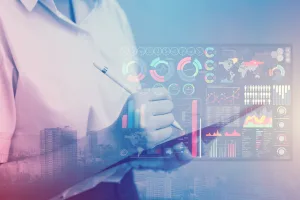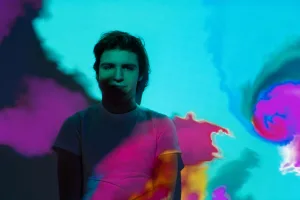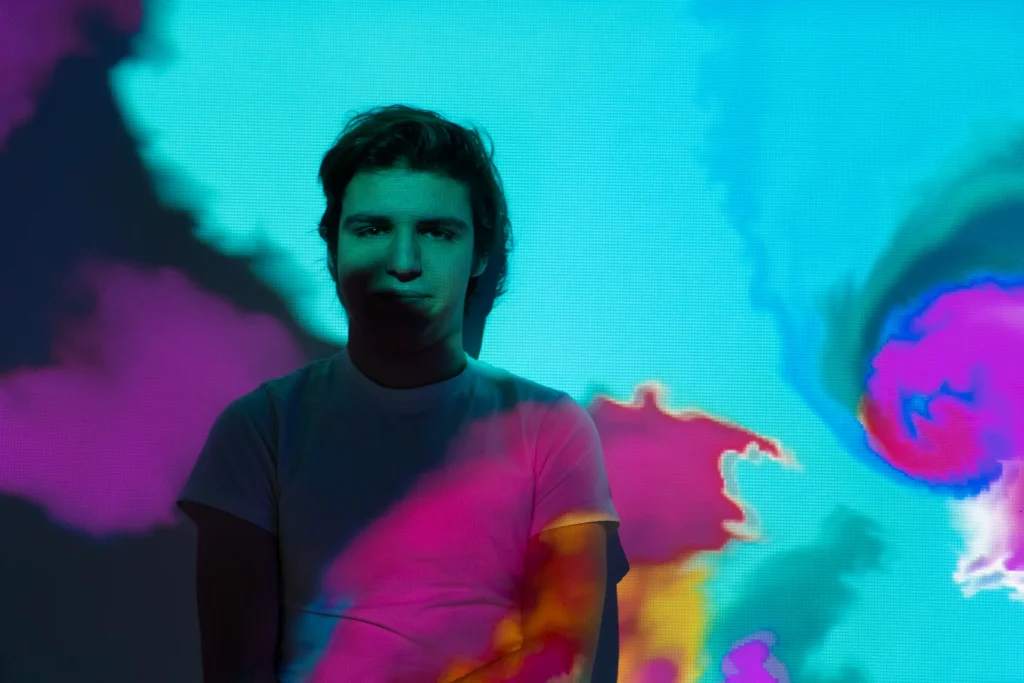The world of technology has drastically revolutionized the way that we interact with our environment and one another. But as these advancements continue to surge onward, a new wave of creativity is emerging–computational creativity. This groundbreaking phenomenon promises to take us into an unprecedented future where robots can not only think for themselves, but create for themselves too. To explore this creative potential and its implications on society, let’s delve into the depths of computational creativity and what it could mean for our collective futures.
Computational creativity is a term used to describe when machines are given the capacity to generate novel ideas that are considered meaningful in some sense. By combining algorithms and data-based systems such as artificial intelligence (AI) or natural language processing (NLP), computers can be programmed to produce works similar to those crafted by humans. In other words, they become capable of “thinking” independently without human input. The result is something truly remarkable: computer-generated creations that possess all the hallmarks of traditional artistry, yet none of the limitations associated with their creator species–the human being.
But just how far will this innovative concept go? What kind of impact will computational creativity have on our lives going forward? We will answer these questions and more as we examine further the limitless possibilities that lie ahead within this revolutionary field of study.
1. What Is Computational Creativity?
 Computational creativity is like a river of possibilities, constantly flowing and changing with the latest technology. It has the potential to revolutionize how humans interact with machines and each other as we look towards an ever-evolving future. In this article, I will explore what exactly computational creativity is and its impact on society.
Computational creativity is like a river of possibilities, constantly flowing and changing with the latest technology. It has the potential to revolutionize how humans interact with machines and each other as we look towards an ever-evolving future. In this article, I will explore what exactly computational creativity is and its impact on society.
At its core, computational creativity is about algorithms that are programmed to think creatively in order to complete tasks traditionally done by people. This includes generating stories or art from scratch, analysing large datasets for insights, creating unique designs or solving complex problems without being explicitly told how. Computational creativity requires computers to process data quickly and precisely while having enough flexibility to come up with new ideas.
The implications of computational creativity reach far beyond software engineering as it can influence multiple aspects of our lives such as education, healthcare and entertainment industries. For instance, AI-powered educational programs could provide personalized recommendations based on students’ strengths and weaknesses; medical diagnosis systems would be able to detect diseases much faster than human doctors; virtual worlds could be created through video games that use procedural generation techniques for more immersive experiences. As technology advances further, there is no telling what else may become possible due to computer generated creative outputs.
This begs the question – how might these advancements affect us? Will they benefit humanity in terms of economic growth or improve our lives in some way? Or will they have a negative impact on our jobs or cause unforeseen consequences? Ultimately time will tell, but one thing is certain – computational creativity continues to shape our world today and into the future.
2. The Benefits Of Computational Creativity
As we move into a new era of technological advancement, the idea of computational creativity has become increasingly prominent. With its potential to significantly alter our lives and society as a whole, it is essential that we understand both the opportunities and implications associated with this concept.
By introducing the element of artificial intelligence into creative processes, there are several positive outcomes which can be attained. For example, allowing machines access to large datasets enables them to generate more diverse outputs without any restrictions on their imaginations – something humans often struggle to do due to personal biases or limitations in resources. Additionally, by removing some of the tedious work from creative tasks such as editing images or content curation, human creators have more time for activities like brainstorming and ideation. This could ultimately lead to higher levels of innovation and productivity within an organization.
Computational creativity also opens up numerous possibilities for individuals with disabilities who may not otherwise have been able to participate in certain aspects of design or art creation. By providing alternative ways for people with impairments to engage creatively, it empowers them with greater control over how they express themselves while fostering a sense of inclusion within their communities. In turn, this encourages social cohesion among groups who might not ordinarily interact with one another in meaningful ways.
3. Challenges Facing The Development Of Computational Creativity
Creating something out of nothing is no piece of cake. As the field of computational creativity continues to expand, it brings with it a host of challenges that must be addressed if society is to reap its benefits. These include ethical considerations, societal impacts, and economic viability.
To begin with, with technological advances come moral dilemmas. When algorithms become capable of producing creative works autonomously, who can claim ownership over them? This issue has created an uncomfortable grey area between human creators and machines that needs further clarification in order for us to move forward confidently as a society. Additionally, when technology becomes more deeply embedded within our daily lives through computational creativity, there are concerns about how this could affect our collective values or lead to the development of digital monopolies.
The second challenge lies in finding ways to monetize these automated creations, so they can benefit both the creator and consumers alike. The lack of viable business models makes it difficult for developers to devote resources towards creating products without any guarantee of returns on their investments. OpenAI’s business model of providing API access to developers may be the primary way that computational creativity is monetized in the future. Furthermore, since the outcomes generated by AI systems are unpredictable from the outset, pricing strategies require careful thought and consideration in order for those involved to make ends meet.
Clearly then, before we can fully realize the potential of computational creativity in society, all stakeholders – including businesses, governments, programmers and users – need to collaborate together in addressing these issues head-on. This will ensure that everyone reaps the rewards while diminishing any potential pitfalls along the way.
4. Examples Of Computational Creativity In Action

Examples of computational creativity in action are already evident today. From AI-generated artworks to automated music compositions, machines are being used to produce creative outputs that were once only possible through human labour. This is especially true in the world of marketing and advertising, where computer algorithms can be utilized to create novel visuals or come up with catchy slogans. Additionally, artificial intelligence is also making its way into other areas such as game design and virtual worlds’ development, allowing for more immersive experiences than ever before. A few popular examples of these creative AI services are:
AIVA is a music generation AI which can produce full compositions in MIDI and WAV format. It comes with a free version which produces tracks which cannot be monetized and paid versions which provide licenses for limited or full monetization depending on the version selected.
Stable Diffusion is an open sourced text-to-image generation service. It can produce incredible artwork in many different styles, including photorealistic images. Many of the stock images used on this website were created using Stable Diffusion. Riku, Nichess and Katteb all offer variations of Stable Diffusion image generators available as part of their AI services.
OpenAI’s GPT-3 is the most famous generative AI, capable of creating incredible written content. Their models are trained on pretty much everything on the internet, allowing it to write fiction and a many different kinds of non-fiction text. It powers ChatGPT and a wide range of content creation AI models, including Frase.io.
However, not all applications of computational creativity receive positive reception from society; some may argue that it takes away jobs from traditional creatives or devalues the concept of artistic expression altogether. Such criticisms have caused researchers to turn their focus towards creating ethical guidelines for working with AI systems and ensuring that humans remain at the centre of any creative process involving technology. As a result, many organizations now require coders and developers to incorporate principles like fairness and transparency when creating programs designed to generate artwork or literature.
In spite of this resistance, though, there is no denying that computational creativity has opened up exciting new possibilities for people around the globe – from entrepreneurs looking to launch innovative products faster than ever before to students gaining access to tools previously unavailable due to cost or lack of resources. The future looks bright for those willing to explore this rapidly evolving field and find ways to make use of its potential benefits while minimizing any associated risks.
5. How Computational Creativity Impacts Society
Have you ever stopped to wonder how computational creativity affects our society? Computational creativity is a relatively recent concept, but its implications are far-reaching. In this section, we will explore the impact of computational creativity on our lives today and in the future.
Computational creativity can have both positive and negative effects on society. On one hand, it allows humans to create works that would otherwise be impossible or impractical due to their complexity, such as complex mathematical calculations or high-quality digital art. It also helps us automate certain tasks so that people do not need to spend time doing them manually. Finally, it has opened up new possibilities for collaboration between machines and humans in creative processes.
On the other hand, there are concerns about how computation may lead to human jobs being replaced by machines or AI algorithms taking over more and more decisions from humans. Additionally, some worry that computational creativity could limit diversity in artistic expression if too much emphasis is placed on algorithmic solutions rather than individual ideas and interpretations.
It remains unclear what effect computational creativity will ultimately have on our world; however, it’s clear that it presents an opportunity to bridge gaps between computers’ capabilities and human ingenuity. With careful consideration of ethical issues surrounding automation and artificial intelligence (AI), computational creativity promises exciting advances in many fields—from science to art—that benefit all members of society.
6. The Ethical Implications Of Computational Creativity
As the advancements of artificial intelligence and computational creativity continue to rise, so too do the ethical implications of its use. The exploration of these ethical considerations is essential for understanding how this technology can be used responsibly and beneficially in society.
First, it’s important to consider the potential privacy issues associated with computational creativity. Many AI-driven applications require access to large amounts of personal data which could potentially be misused or exploited by malicious actors. Additionally, such technologies are often developed without any input from users themselves, creating a disconnect between creators and consumers that raises further moral questions about the development process itself.
Second, there is also a risk associated with allowing machines to make creative decisions on behalf of humans. As algorithms become increasingly sophisticated and able to autonomously generate content, concerns emerge over who has ultimate control over what is created—and whether human opinion should take precedence over machine judgement if they differ. In order to ensure fair outcomes when utilizing automated creation processes, careful thought must be given as to where responsibility lies for decision making within these systems.
Finally, one must not overlook the wider societal impact that increased reliance on automation may have in terms of job losses as well as other economic consequences. With more tasks being taken up by machines instead of people, workers across many sectors will need to adapt their skillsets or face displacement; meanwhile governments and policymakers will need to grapple with new regulatory challenges posed by ever-evolving technologies. All stakeholders involved in shaping our collective future must carefully weigh up both sides before reaching an informed conclusion on how best we can proceed together with computational creativity at our side.
7. The Future Of Computational Creativity
 The future of computational creativity is an exciting prospect. It’s the potential to unlock new possibilities in digital media, art and design that could have a real impact on how we interact with technology. As more advancements are made in machine learning and AI, it’s likely that this will open up entirely new areas for creative exploration.
The future of computational creativity is an exciting prospect. It’s the potential to unlock new possibilities in digital media, art and design that could have a real impact on how we interact with technology. As more advancements are made in machine learning and AI, it’s likely that this will open up entirely new areas for creative exploration.
At the same time, there is concern about the implications of introducing automation into creative processes. We must think carefully about what kind of role machines should play in generating ideas or creating artworks. Are these decisions best left to humans? How much autonomy should be given to computers when it comes to making aesthetic judgments?
These questions need answers before we can move forward confidently with incorporating computational creativity into our lives and work. To do this effectively requires collaboration between people from different disciplines: computer scientists, designers, artists and ethicists all have something valuable to offer here. Ultimately, it’s important that whatever solutions are developed are created responsibly and ethically – ensuring they benefit society as a whole instead of just a few individuals.
Conclusion
As we look to the future of computational creativity, it is clear that this technology will continue to grow in sophistication and capability. It has already proven itself as a valuable tool for creative expression and problem-solving, with far-reaching implications for how humans interact with computers and machines. But with any new technology comes ethical considerations, which must be addressed when considering its use in society.
The possibilities for using computational creativity are endless, and the potential benefits cannot be overstated. There is no doubt that it can revolutionize industries from art to education to medicine, making tasks easier, faster, or even possible where they weren’t before. I believe this technology holds great promise if used responsibly; however, unless safeguards are put into place to protect users’ rights and ensure equitable access across all demographics, its full potential may not be realized.
In summary, computational creativity has immense power to shape our world in positive ways—from improving artistic expression to helping us tackle complex problems more efficiently than ever before. With proper consideration of the ethical implications involved in its development and use, there is no limit to what this revolutionary technology can do for humanity going forward.
